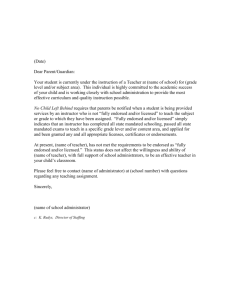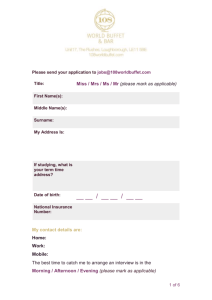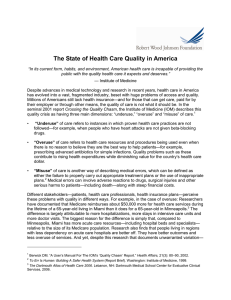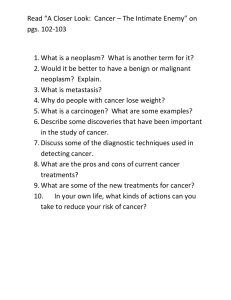AARP Presentation February 12, 2007 Elliott Fisher, MD, MPH CECS
advertisement
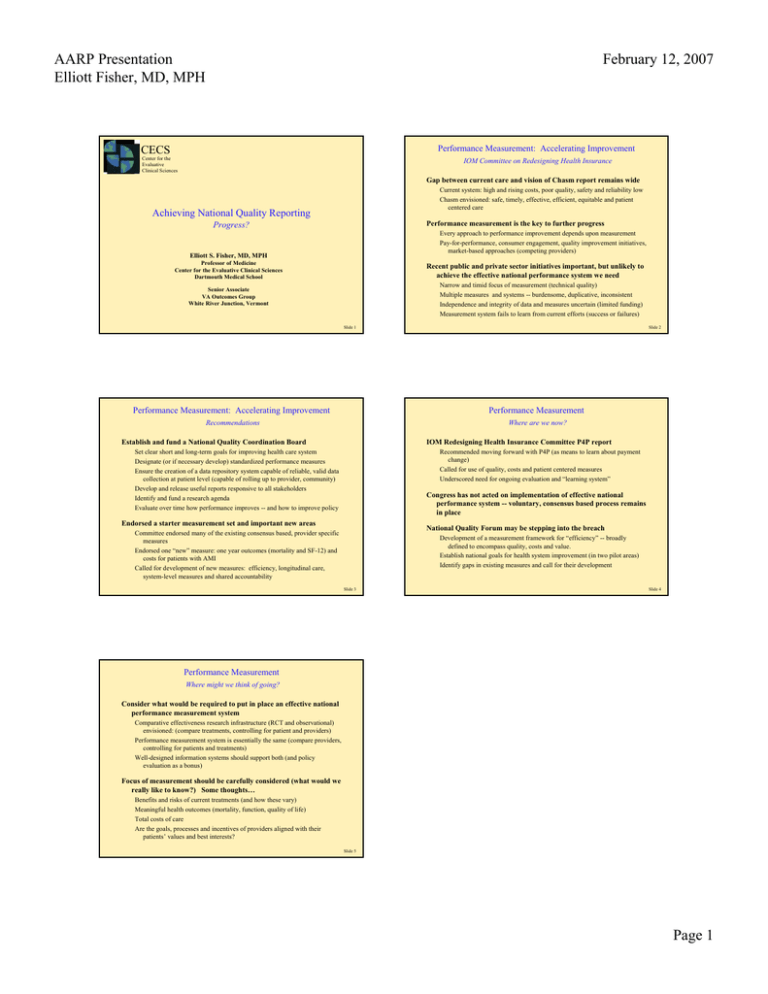
AARP Presentation Elliott Fisher, MD, MPH February 12, 2007 Performance Measurement: Accelerating Improvement CECS Center for the Evaluative Clinical Sciences IOM Committee on Redesigning Health Insurance Gap between current care and vision of Chasm report remains wide Current system: high and rising costs, poor quality, safety and reliability low Chasm envisioned: safe, timely, effective, efficient, equitable and patient centered care Achieving National Quality Reporting Performance measurement is the key to further progress Progress? Every approach to performance improvement depends upon measurement Pay-for-performance, consumer engagement, quality improvement initiatives, market-based approaches (competing providers) Elliott S. Fisher, MD, MPH Professor of Medicine Center for the Evaluative Clinical Sciences Dartmouth Medical School Recent public and private sector initiatives important, but unlikely to achieve the effective national performance system we need Narrow and timid focus of measurement (technical quality) Multiple measures and systems -- burdensome, duplicative, inconsistent Independence and integrity of data and measures uncertain (limited funding) Measurement system fails to learn from current efforts (success or failures) Senior Associate VA Outcomes Group White River Junction, Vermont Slide 1 Slide 2 Performance Measurement: Accelerating Improvement Performance Measurement Recommendations Where are we now? Establish and fund a National Quality Coordination Board IOM Redesigning Health Insurance Committee P4P report Set clear short and long-term goals for improving health care system Designate (or if necessary develop) standardized performance measures Ensure the creation of a data repository system capable of reliable, valid data collection at patient level (capable of rolling up to provider, community) Develop and release useful reports responsive to all stakeholders Identify and fund a research agenda Evaluate over time how performance improves -- and how to improve policy Recommended moving forward with P4P (as means to learn about payment change) Called for use of quality, costs and patient centered measures Underscored need for ongoing evaluation and “learning system” Congress has not acted on implementation of effective national performance system -- voluntary, consensus based process remains in place Endorsed a starter measurement set and important new areas National Quality Forum may be stepping into the breach Committee endorsed many of the existing consensus based, provider specific measures Endorsed one “new” measure: one year outcomes (mortality and SF-12) and costs for patients with AMI Called for development of new measures: efficiency, longitudinal care, system-level measures and shared accountability Development of a measurement framework for “efficiency” -- broadly defined to encompass quality, costs and value. Establish national goals for health system improvement (in two pilot areas) Identify gaps in existing measures and call for their development Slide 3 Slide 4 Performance Measurement Where might we think of going? Consider what would be required to put in place an effective national performance measurement system Comparative effectiveness research infrastructure (RCT and observational) envisioned: (compare treatments, controlling for patient and providers) Performance measurement system is essentially the same (compare providers, controlling for patients and treatments) Well-designed information systems should support both (and policy evaluation as a bonus) Focus of measurement should be carefully considered (what would we really like to know?) Some thoughts… Benefits and risks of current treatments (and how these vary) Meaningful health outcomes (mortality, function, quality of life) Total costs of care Are the goals, processes and incentives of providers aligned with their patients’ values and best interests? Slide 5 Page 1
